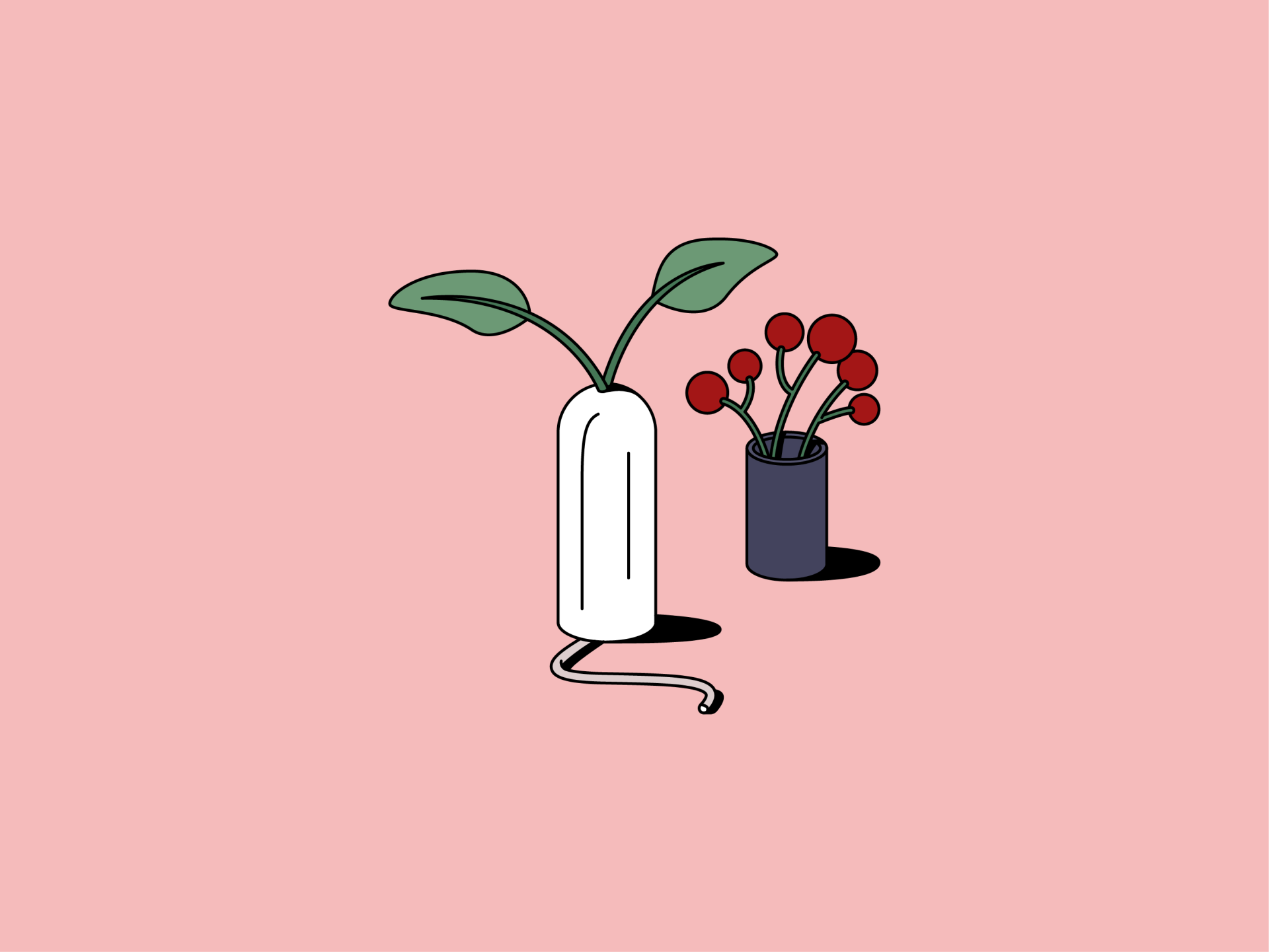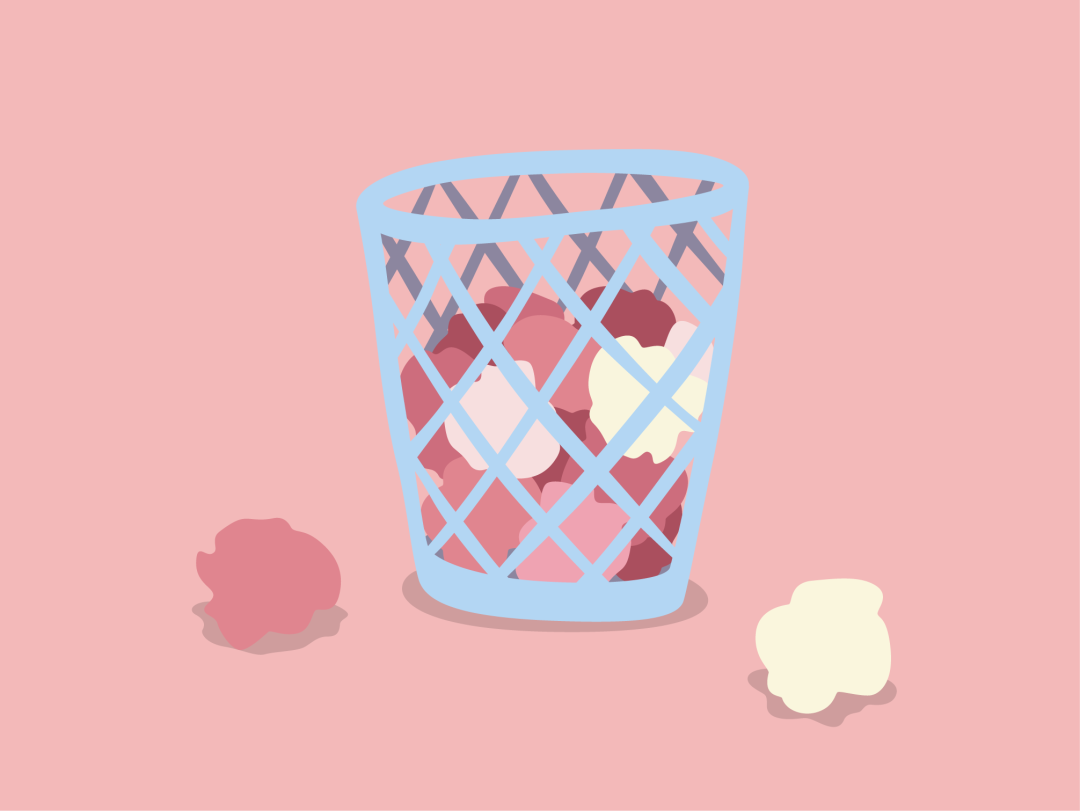Sign up to stay in the loop on new styles and sales!
Sign up to stay in the loop on new styles and sales!
#explainer
Taking an Eco-Friendly Approach to Tampons
health
·5 min read

by Toni Brannagan | 01/23/2019
IMHO, the most annoying part about tampon usage is how little we know about most major brands, and how much I used to feel like I was trashing the planet whenever I used one. I stopped buying iced coffee from places with plastic straws, I know I can be doing better!
I’m sure that the last thing you probably want to do when you’re already bloated and sad and literally bleeding is worry about maintaining an eco-friendly lifestyle, but making just a few small changes to your personal routine can go a looong way.
Here are some easy-peasy steps you can take to level up your tampon usage:
go organic
I’m convinced that just by simply thinking the words “organic cotton tampons,” Facebook and Instagram will decide those will be the only things advertised to you for a week, so have fun with that.
I think the best argument for making the switch to organic, if the option is available to you, is the materials. Most new brands selling them (ours included, of course!) are committed to transparency when it comes to what’s in your tampons—but the tampons we grew up using are a different story.
So, what is in those *other* tampons? That’s the thing, if you skim through any of the paper booklets in the boxes of your old school tampons, or even scour their sites (which I have lol), you’re gonna get some pretty vague answers.
You’d think that it would be important to make sure something as intimate as tampons are 100% body-safe, but that hasn’t historically been the case. Fact: Tampon brands are actually not required to disclose what’s going on in there to the FDA, which is already not so great, especially since some of the synthetic materials we *do* know are in non-organic tampons are pretty sketch.
A few examples? Rayon (an ingredient associated with an increased likelihood of toxic shock syndrome), chlorine, BPA, and ~fragrances~. Say it with me: No 👏 scented 👏 products 👏 in 👏 yo’ 👏 vagina.
Also — I probably don’t have to spell out the harmful effects these ingredients could have on your bod, but we haven’t even gotten to the havoc they wreak on the environment. The good news is, a switch to organic tampons eliminates *all* of these issues.
ditch applicators
Chances are, there’s an applicator-free version of your fave tampons. (This is especially true for many organic brands, so that’s another plus!)
There’s a bit of a learning curve that comes with applicator-free tampons, especially if you’ve been using applicators your whole life, but the environmental effects are worth it. Just like the switch to THINX, a small change can lead to big results for your physical and emotional health.
Almost every plastic applicator we’ve ever used, unfortunately, is sitting in a landfill (or the ocean) right now. Just like bottles and bags, they take hundreds of years to biodegrade, but since your tampons come into contact with *bodily fluids*, they can’t even be recycled. Bummer.
To put that into context, the average tampon user goes through about a dozen every cycle, and the average person with a period menstruates for 30ish to 40ish years… I’m bad at math, but that’s a loooooot of plastic. That’s a good enough reason to try something new, right?
Wait—you might be arguing—plastic applicators aren’t the only option, what about cardboard? Unfortunately, cardboard applicators are *also* coated in a layer of plastic, which seems counterintuitive BECAUSE IT IS.
switch to re.t.a
If applicators are non-negotiable, that’s okay! (And don’t worry, you’re not alone — over 80% of tampons sold in the US in 2015 featured plastic applicators!).
Check out re.t.a, the first FDA-cleared reusable tampon applicator and our latest innovation. With re.t.a, you don’t have to worry about any of the weird stuff that *might* be in those brand name tampons we were talking about earlier — it’s made with medical-grade materials, and no BPA or latex. Yay for body-safe products!
Using re.t.a, you’ll be eliminating an estimated 58% of your personal period waste. A win for Mother Nature *and* your V!
I hope that you find some of these suggestions to be good jumping off points, but when it comes down to it, trying to be more sustainable is all about figuring out what works with your budget, body, and lifestyle. There’s no shame in taking your time to find out what works for *you*!
Have you adopted a greener approach to your period? Share your tips with us in the comments!
Toni Brannagan is a writer and was the former Copy and Content Manager at Thinx.
by Toni Brannagan


